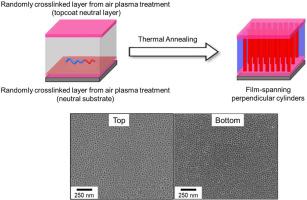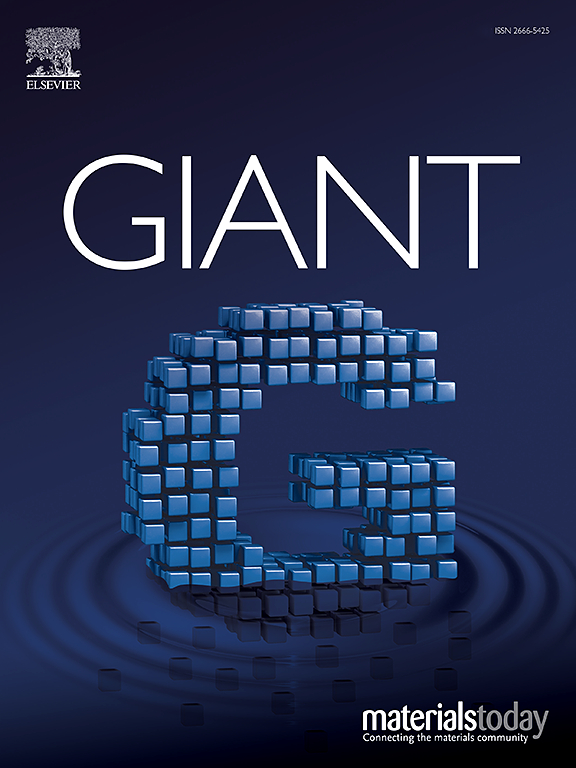热退火空气等离子体处理聚苯乙烯-b-聚(l -丙交酯)纳米薄膜的取向控制
IF 4.9
1区 化学
Q2 CHEMISTRY, MULTIDISCIPLINARY
引用次数: 0
摘要
本工作旨在开发一种通过热退火来控制纳米结构嵌段共聚物(BCP)薄膜取向的新方法。采用自旋镀膜和空气等离子体处理法制备了一层聚苯乙烯-嵌段聚(l -丙交酯)(PS-b-PLLA)薄膜,得到了一层随机交联的PS和PLLA。该层将作为PS-b-PLLA薄膜第二层的中性衬底,通过热退火从薄膜底部在PS矩阵中形成垂直的PLLA圆柱体。随后,对PS-b-PLLA薄膜的第二层进行二次空气等离子体处理,使热退火后的PS-b-PLLA薄膜顶部形成垂直PLLA圆柱体的面涂中性层,通过自对准过程形成跨膜垂直PLLA圆柱体。随着PS-b-PLLA单体中PLLA的退化,有可能产生具有长圆柱形纳米通道的PS膜,这对NanoMEMS制造、膜制造和模板合成等应用具有吸引力。本文章由计算机程序翻译,如有差异,请以英文原文为准。

Controlled orientation of polystyrene-b-poly(L-lactide) nanostructured thin films by air plasma treatment via thermal annealing
This work aims to develop a new approach for controlling the orientation of nanostructured block copolymer (BCP) thin films via thermal annealing. A thin layer of polystyrene-block-poly(L-lactide) (PS-b-PLLA) thin film is prepared by spin coating followed by air plasma treatment, giving a layer with randomly crosslinked PS and PLLA. This layer will serve as a neutral substrate for the second layer of PS-b-PLLA thin film to develop perpendicular PLLA cylinder in PS matrix from the bottom of the thin film by thermal annealing. Subsequently, the second air plasma treatment is carried on the second layer of PS-b-PLLA thin film to give a topcoat neutral layer for the development of perpendicular PLLA cylinders from the top of the thin film after thermal annealing, giving film-spanning perpendicular PLLA cylinders through self-alignment process. With the degeneration of the PLLA in the PS-b-PLLA monolith, it is possible to create PS film with prolonged cylindrical nanochannels that is appealing for applications such as NanoMEMS manufacturing, membrane fabrication and templated synthesis.
求助全文
通过发布文献求助,成功后即可免费获取论文全文。
去求助
来源期刊

GIANT
Multiple-
CiteScore
8.50
自引率
8.60%
发文量
46
审稿时长
42 days
期刊介绍:
Giant is an interdisciplinary title focusing on fundamental and applied macromolecular science spanning all chemistry, physics, biology, and materials aspects of the field in the broadest sense. Key areas covered include macromolecular chemistry, supramolecular assembly, multiscale and multifunctional materials, organic-inorganic hybrid materials, biophysics, biomimetics and surface science. Core topics range from developments in synthesis, characterisation and assembly towards creating uniformly sized precision macromolecules with tailored properties, to the design and assembly of nanostructured materials in multiple dimensions, and further to the study of smart or living designer materials with tuneable multiscale properties.
 求助内容:
求助内容: 应助结果提醒方式:
应助结果提醒方式:


